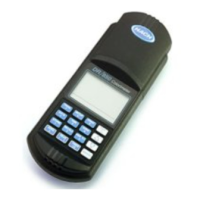361
Sampling and Storage
Analyze samples immediately after collection for best results. If
prompt analysis is not possible, samples may be preserved up to
48 hours by cooling to 4 °C (39 °F). Warm to room temperature
before testing.
Interferences
If the sample is turbid, use 50 mL of sample and double the
reagent volumes. Use the hydrolyzed sample to zero the
instrument in the reactive phosphorus procedure. This
compensates for any turbidity dissolved by this procedure.
Summary of Method
This procedure lists the necessary steps to convert condensed
phosphate forms (meta-, pyro- or other polyphosphates) to
reactive orthophosphate before analysis. The procedure uses acid
and heat to hydrolyze the sample. Organic phosphates are not
converted to orthophosphate by this process, but a very small
fraction may be unavoidably included in the result. Thus, the
“acid hydrolyzable” phosphate results are primarily a measure of
inorganic phosphorus. This procedure must be followed by one of
the reactive phosphorus (orthophosphate) analysis methods for
determination of the phosphorous content of the sample.
The following reagents and apparatus are required in addition to
those required for the reactive phosphorus test.
PHOSPHORUS, ACID HYDROLYZABLE, continued

